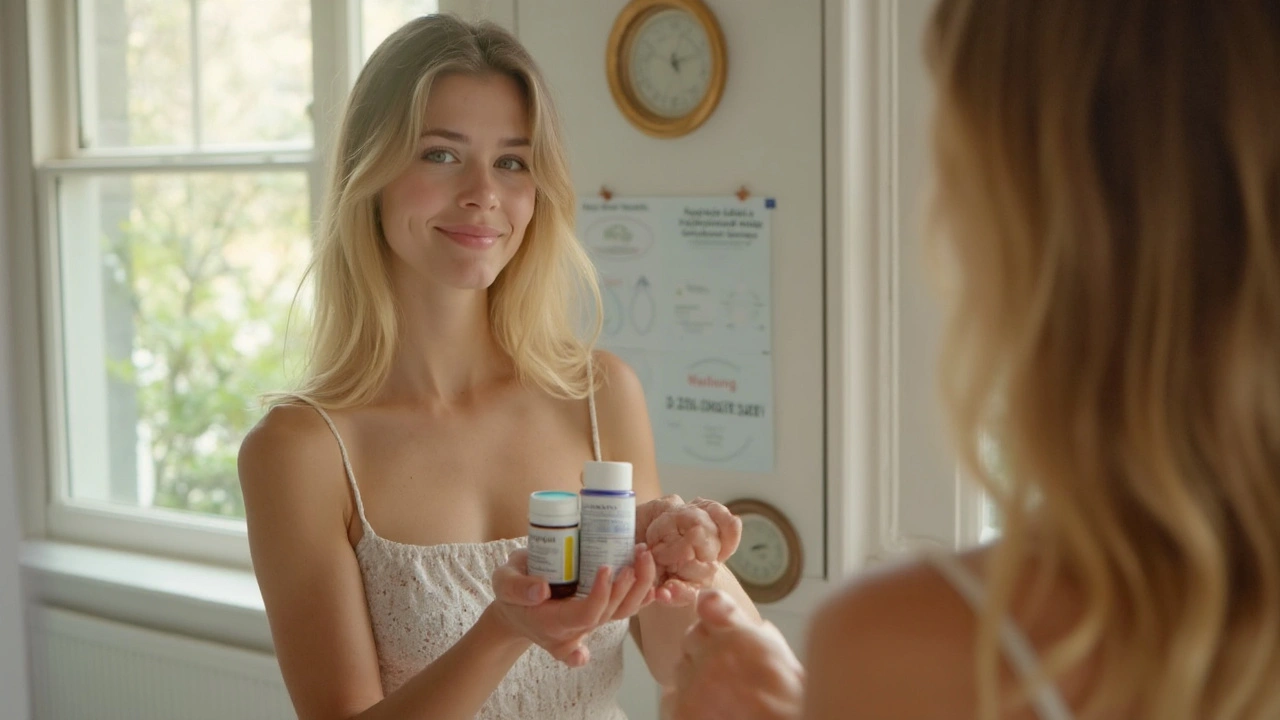Acne Treatment: Practical, Affordable Options That Work
Acne sucks. You want something that actually helps, doesn’t wreck your skin, and won’t empty your wallet. Here’s a clear, no-fluff guide to what works, what to try first, and when to get a prescription.
Start with the basics: routine and active ingredients
Clean skin doesn’t stop acne, but a simple routine helps. Use a gentle cleanser twice a day — nothing harsh that strips your skin. After cleansing, try one of these affordable actives:
- Salicylic acid (0.5–2%): unclogs pores and reduces blackheads. Good for oily, spot-prone skin.
- Benzoyl peroxide (2.5–10%): kills acne bacteria and dries active pimples. Use at night, and expect some dryness at first.
- Adapalene (0.1% OTC): a retinoid that prevents new pimples and smooths texture. Use nightly and apply sunscreen during the day.
Introduce one active at a time and give it 6–8 weeks. If skin gets too dry, reduce frequency rather than stop completely.
When OTC isn't enough: prescription options
If acne is painful, deep, or causing scarring, see a clinician. Common prescription options include topical tretinoin, topical antibiotics combined with benzoyl peroxide, oral antibiotics for short courses, hormonal treatments (combined birth control pills or spironolactone for those who can take them), and isotretinoin for severe cystic acne. Each has trade-offs—antibiotics shouldn’t be long-term, spironolactone needs monitoring, and isotretinoin has important safety rules.
Ask your provider about goals, side effects, and how long you’ll need treatment. Most prescriptions take 8–12 weeks to show real improvement.
Safety tip: only buy prescription meds from licensed pharmacies. If you order online, check for clear contact info, a valid pharmacy license, and that they require a prescription when needed.
Quick practical tips that help right away:
- Sleep on a clean pillowcase and avoid touching your face.
- Use non-comedogenic (won’t clog pores) moisturizers and makeup.
- Spot-treat with benzoyl peroxide on inflamed pimples; use hydrocolloid patches for small surface spots to speed healing.
- Wear sunscreen daily—some acne meds increase sun sensitivity.
- Don’t pick or pop—this raises the risk of scarring and infection.
Diet and acne: cutting back on high-glycemic foods and dairy can help some people, but results vary. If you suspect diet matters for you, try a simple 4–6 week change and track results.
How long until you see results? Mild acne can improve in 6–12 weeks with consistent OTC care. Persistent, painful, or scarring acne needs medical help sooner. If you see no improvement after 3 months, book an appointment.
Bottom line: start with a gentle routine plus one active (salicylic acid, benzoyl peroxide, or adapalene). Be patient and consistent. For severe or scarring acne, get a prescription and follow safety advice when buying meds online.
